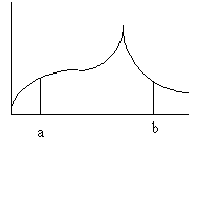Discussion and Homework
Eleventh Reading Assignment
Notes for the Readings
The Fibonnaci sequence is well known with many interesting properties. Reading 53 has its origin.
Elements Proposition VI. 4: In equiangular triangles the sides about the equal angles are proportional, and those are corresponding sides which subtend the equal angles.
Questions for Discussion
Reading 7.A1
- Compare the second method of solution of the "Tree problem" to the "Excess and deficiency method of reading 49. What is the key idea?
- Consider the second method of solution of the "Tree problem". Let be the guess (instead of 12). Now write out the solution using .
- Problems like "The lion, the leopard, and the bear" are prevalent in modern elementary algebra books. Find such a problem with a solution, copy it, and bring it to class so we can compare the method of solution with that of Leonardo.
Reading 54
- In the discussion of a quality "uniformly difform which is terminated at no degree", do you see how one could get the notion of slope?
- What about "difformly difform"? How does slope come into play in its description?
Reading 55
- The necessity of imagining quantities geometrically gets Oresme in trouble on page 258 (part 3). How can this trouble be eliminated with analytic geometry?
- The mean speed rule is "when a body is uniformly accelerated from rest to some given velocity, it will in that time traverse one-half the distance that it would traverse if, in that time it were moved uniformly at the final velocity . . . for that motion, as a whole, will correspond to precisely one-half that degree which is its terminal velocity". What does this mean in modern notation and where is this proven in the reading?
- Make sure you understand "uniform", "uniformly difform" (terminated at both extremes at some degree, or terminated at no degree), and "difformly difform".
- In physics (or calculus), how can one find the distance traveled from time t = a to t = b if the rate of change is given by f(t)? What if the rate of change is given by

Homework Problem
- from Victor Katz, A History of Mathematics: An Introduction (Harper Collins). Solve the following problem of Oresme:
Divide the line AB of length 1 proportionally to infinity in a ratio of 2 : 1; that is, divide it so the first part is one-half, the second one-quarter, the third one-eighth, and so on. Let there be a given finite velocity (say, 1) in the first interval, a uniformly accelerated velocity (from 1 to 2) in the second, a constant velocity (2) in the third, a uniformly accelerated velocity (from 2 to 4) in the fourth, and so on. Show that the total distance traveled is 7/4.
Hints: Draw a picture, and use the idea of question for Discussion number 4.
 A pdf version of this page and the accompanying reading assignment.
A pdf version of this page and the accompanying reading assignment.
Go back to course home page
Go back to
my home page.


![]() A pdf version of this page and the accompanying reading assignment.
A pdf version of this page and the accompanying reading assignment.